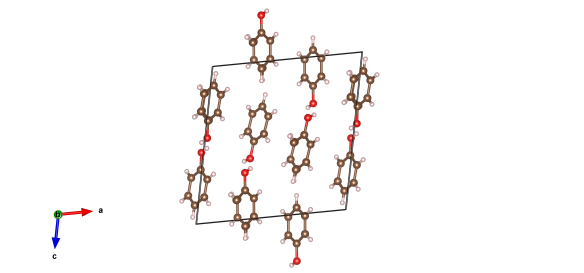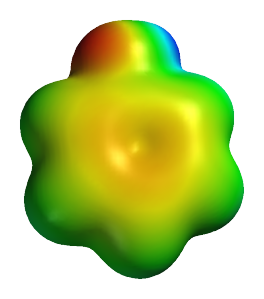A small molecule that has saved a lot of lives – phenol
What does it look like?

Image generated by the VESTA (Visualisation for Electronic and STructural analysis) software http://jp-minerals.org/vesta/en/
What is it?

Neutral phenol substructure "shape". An image of a computed electrostatic surface of neutral phenol, showing neutral regions in green, electronegative areas in orange-red, and the electropositive phenolic proton in blue. http://en.wikipedia.org/wiki/Phenol
It's an incredibly simple molecule, but it has saved many lives and spawned a whole new generation of stuff. The phenol molecule, or carbolic acid, is a ring of six carbon atoms with a hydroxyl (a pair of oxygen and hydrogen) hanging off it. In 1865 it was used by Joseph Lister as the first antiseptic. Though it is never used now (phenol will burn the skin, and is toxic to inhale) the procedures of antiseptic surgery that Lister put in place with this small molecule prevented many infections that would have killed before.
But the importance of phenol doesn't stop there; it is an essential component of 'Bakelite', the world’s first plastic-like material. Synthesising phenol with formaldehyde, Leo Baekeland produced a material that could be fused into any shape he chose and began the age of plastics!
Where did the structure come from?
Despite the fact that pure phenol is solid at room temperature the crystal structure wasn't established until 1987, by a group in Russia. We've actually chosen to feature a high-pressure polymorph of solid phenol – the molecule still stays the same under 0.16 GPa of pressure (equivalent to the pressure under a stiletto heel being worn by a moderate sized hippo), but the way it packs into a solid does change. This structure is #2103472 in the Crystallography Open Database, and was found by Allan et al. in 2002.






